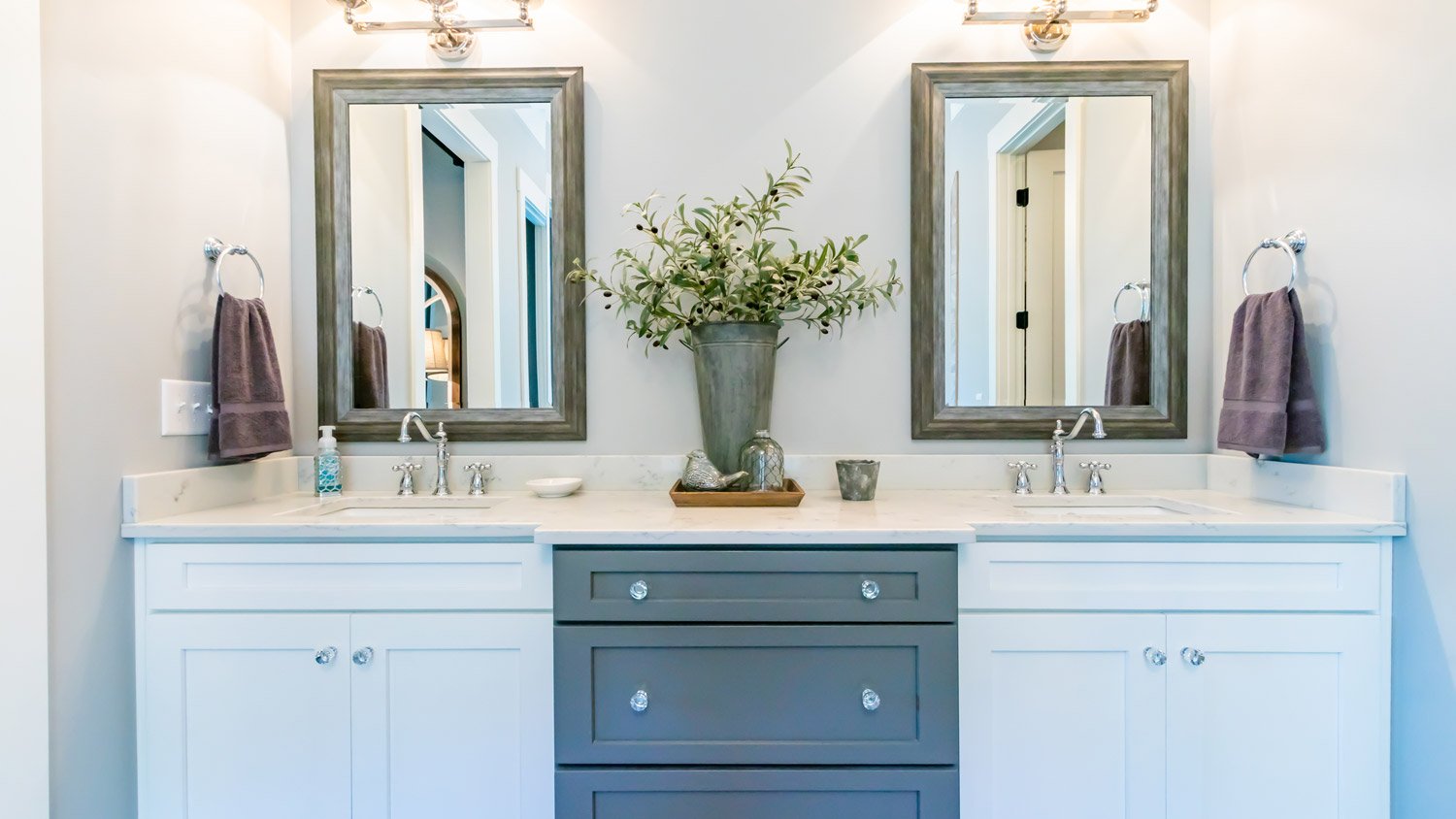
Discover the cost to paint kitchen cabinets, including average prices, cost factors, and tips to help you budget and save on your next kitchen update.
You don’t need to sink a ton of time into this high-impact bathroom update


A new bathroom vanity can instantly transform the look of your bathroom while adding much-needed storage and counter space. Luckily, learning how to install a bathroom cabinet isn’t too overwhelming or time-consuming—you’ll only need a helper and a few tools to get it done. Whether you’re replacing your old vanity or installing a brand-new one in your newly built bathroom, here’s what to do.

Take a hard look at the swing distances of your bathroom entrance door, shower surround, and any other cabinetry to make sure you have room for an additional cabinet. Designers who work in small spaces—think: European or Scandinavian style—are used to creatively adapting cabinet bathroom storage. So, it might be helpful to do some research or schedule a consultation with an interior designer before committing to the project if you have a challenging bathroom space.
It’s pretty much a given that you’ll need an extra pair of hands to install a bathroom cabinet, so call in a friend's favor or use your significant other as an assistant when doing this DIY remodel project.
Measure the width and depth of the space where you plan to install the bathroom cabinet. Ensure your desired cabinet size will fit without hindering the door clearance or colliding with other fixtures. There’s nothing worse than getting a new cabinet in your bathroom only to find when you open it that it doesn’t clear the door or slams into the shower as you reach for a fresh bar of soap.
There are bathroom vanities to suit any space, so be sure to shop around until you find one you love. You’ll have to decide between a raw, customizable cabinet or a premade, painted bathroom vanity. If you’re upcycling an existing cabinet, sand the cabinet and allow time for the paint to dry before installation.
Locate the drainpipe under the sink, which has a curved section known as the P-trap. Position a towel or bucket beneath the P-trap to catch any water that leaks from the trap. Loosen the nut at the top of the P-trap and gently pull the trap down from the sink drainpipe. You may need to completely remove the trap.
Using an adjustable wrench, disconnect the water lines from the valves. Be prepared to catch any water spillage during this process with a bucket. Cut through the caulk or sealant that binds the sink backsplash to the wall with a utility knife.
Next, you’ll need to remove the existing cabinet or vanity to make room for the new model. You can unsecure standalone cabinets that can be removed like furniture, but those with straps or safety screws require a screw gun. For DIY bathroom remodels, you may want to invest in the cost of renting a dumpster since you’ll be disposing of cabinetry pieces.
Once the old bathroom cabinet is removed, you may need to repair parts of the drywall. If you’re new to the process, learn how to repair drywall based on the size of the hole—applying spackle or filling in the hole with a patch kit are a couple of good options. If there’s major damage to the drywall in your bathroom, consider hiring a drywall repair professional to evaluate the best course of action for the issue.
Next, measure and mark an outline of where the sink will be on the wall. Use a stud finder to find and mark the studs within the outlined space. Using a tape measure, determine the position of pipes on the bathroom wall.
If the back of your new vanity is solid, measure the location of the pipes and mark these pipe positions on the back of the vanity. Use an appropriately sized hole saw to cut holes for the pipes.
Place a level on the top of the cabinet and have an assistant ensure the cabinet is straight as you screw it into the studs. For floor-sitting cabinets, secure with straps or screws for stability. Test the new bathroom cabinet for stability by pressing down on it and adding items to ensure it doesn’t tilt or slip.
Learning how to install a bathroom cabinet is a relatively DIY-friendly project that you can accomplish with a few basic tools and an extra set of hands. If you already have the cabinet, or if you are purchasing a prefab model, a handyperson is the ideal pro to hire to install a bathroom cabinet. However, if you want a custom build that perfectly fits your space, consider contacting a local cabinet contractor to help bring your vision to life.
From average costs to expert advice, get all the answers you need to get your job done.

Discover the cost to paint kitchen cabinets, including average prices, cost factors, and tips to help you budget and save on your next kitchen update.

The cost of garage cabinetry and storage depends on the size, materials, labor, and more. Our guide will show you how much garage cabinets cost.

Your cabinet removal cost will depend on kitchen size and labor expenses. Find out what your budget could look like.

Installing cabinet doors is a simple DIY project that can enhance your living space. Learn how to install cabinet doors with this step-by-step guide.

Does your cabinetry need better lighting? Learn how to install under cabinet lighting with these top techniques.

When upgrading your kitchen, compare inset vs. overlay cabinets. Here’s what you should know about the differences between the two constructions.